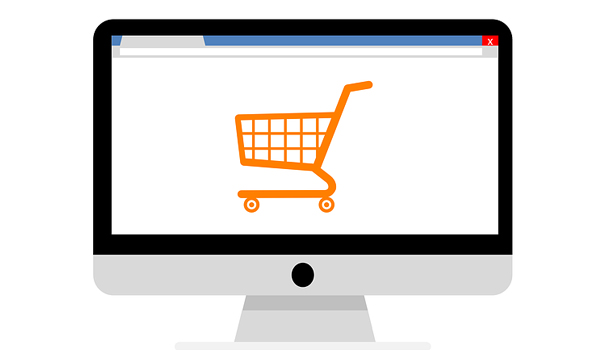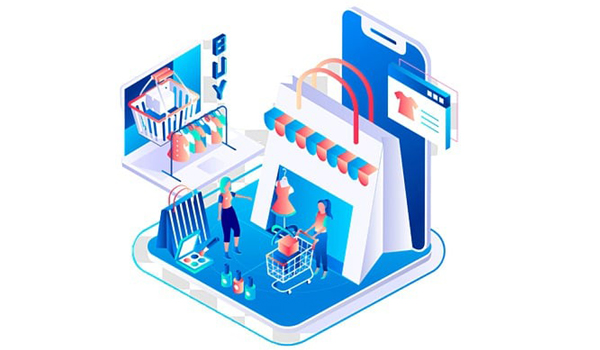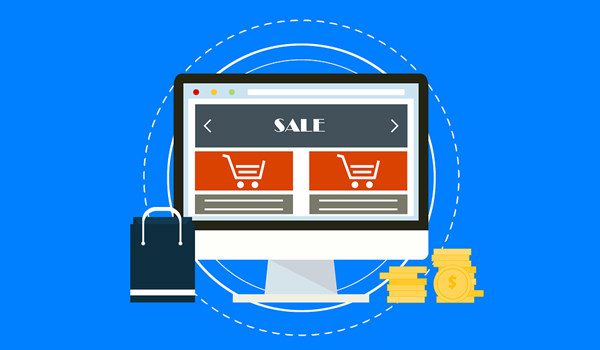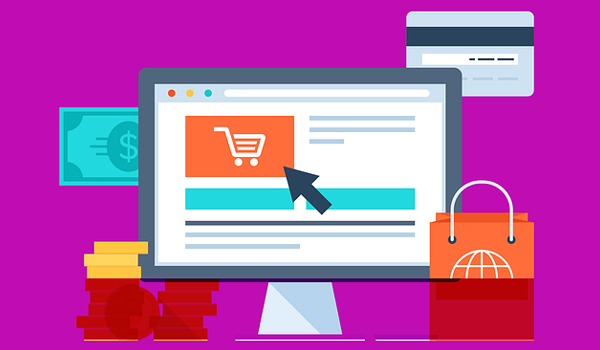
eCommerce Software
Explore eCommerce Software category & post requirement to connect with eCommerce Software provider for your business and get the best quotes from multiple eCommerce Software provider.
What is eCommerce Software:
eCommerce software is a category of software that allow users to manage and oversee an online store by creating a fully functional digital storefront. Generally, the online store will follow a self-service model, in which users are allowed to browse the available products and services, add items to their digital basket, complete a purchase, request a delivery, organize refunds or returns, and access customer service support.
It is possible to manage all aspects related to online retail and eCommerce, such as customer service, order fulfillment, deliveries and shipping, returns and refunds, inventory, and a product catalog or library with product descriptions by using eCommerce Software. The best eCommerce software can serve as a central eCommerce hub as sales reporting, payment processing and, customer relationship management are also allowed in many cases.
B2B eCommerce software solutions, which are geared towards business-to-business transactions, or eCommerce marketing software, which places a greater emphasis on marketing rather than sales and customer service are particularly focused by some solutions. A more comprehensive range of features are provided by some of the free eCommerce software options on the market, which can be ideal for any small eCommerce business.
Benefits of eCommerce Software:
The benefits of eCommerce solutions are usually based on their ability to help businesses create and then maintain an eCommerce website. A wide range of features are provided by most of these solutions, so that almost all major elements of running an online retail site can be carried out from a single, centralized location. Some of the specific benefits that a user get by using eCommerce website software are as below:
Set up and manage an online retail platform:
- An eCommerce solutions is their ability to allow users to not only set up an online retail website or platform but also continually manage that platform.
- User should be able to continuously add products or services to the platform, update product descriptions, provide self-service features for customers, gather information about customers and their habits, manage aspects like the delivery or shipping of products, and process any refund requests.
- Companies can save time and money as all of these tasks can be carried out from one place.
- It is also much easier to train employees to make use of the tools at their disposal which can be especially advantageous to smaller businesses that only trade online.
Automate key eCommerce tasks:
- The ability to automate some of the recurring, repetitive, predictable, or unnecessarily time-consuming tasks that are associated with online transactions is another significant benefit of using eCommerce applications.
- So, a more standardized customer experience can be provided while saving employees time and effort that could be better spent on some of the more complex tasks that actually need human ingenuity.
Track stock levels and manage inventory:
- Managing an inventory and ensuring that items are in stock as much as possible is a key part of running an eCommerce website.
- Manually tracking stock levels and managing inventory can be laborious and may also result in items being overlooked, especially if stock runs low at a time when people are unavailable to act.
- The key elements of inventory management can be automated in eCommerce software which will continually track current levels of stock and send alerts when stock levels run low.
- They can also automatically order new stock when levels reach a chosen threshold.
- Machine learning capabilities is used by the most advanced software to determine when demand is likely to increase and when the best time to order new stock would be, in order to avoid issues caused by sudden demand spikes.
Capitalize on marketing features:
- Marketing functionality are offered by most of the software in this category that can be beneficial, including options to automatically apply search engine optimization (SEO) principles to product pages.
- Some software can also track the interactions of users with the eCommerce website, identify products or services that are most likely to be of interest to them, and either send out targeted marketing emails or provide recommendations when using the website.
Monitor the performance of a digital storefront:
- Users are allowed to monitor the performance of an online retail website or platform over time, by tracking key metrics related to visits, sales, interest in particular products or services, and more.
- It is then easier to optimize the website and the marketing strategy of an organization so that the right products and services are being promoted and customers are targeted with the information that is most likely to produce positive outcomes.
Features of eCommerce software:
Although precise features, options, and tools can differ significantly depending on the software chosen and the primary focus areas of that software, some core features are shared by most solutions.
These include:
Website management:
- The software can help build, manage, and maintain an eCommerce website, complete with product pages, self-service functionality, and more.
- A variety of templates are provided by most solutions that can be used for the quick and easy creation of a digital storefront which can then be customized to ensure it fits with the requirement of an individual business.
- Much more advanced creation tools are provided by some options on the market, which allow those people with the necessary technical skills to implement more complex features and design elements.
- eCommerce solutions can be made ideal for businesses that wish to trade entirely online or those that wish to move into the eCommerce sphere with this ability to create an online store.
Order management:
- You can track, process, and also organize customer orders from a single, central location.
- Order fulfillment, customer relationship management, and responding to requests for refunds or returns becomes easy with the ability to store data related to all customer orders.
- Users are also allowed to take data from past orders in many solutions and use this data to make intelligent recommendations to customers about other products or services they may be interested in.
- Long-term, repeat business becomes more likely because of this feature within eCommerce solutions.
- eCommerce order management software can also be acquired, which is specifically designed to focus on this area.
Cataloging/categorization:
- You can add individual products, services, and other items to an internal catalog, from which, users are able to categorize these items.
- Businesses will be able to provide each individual item with a description, category, price, some tags that can help users to find the item when searching, and more by using the product and service catalog.
- Items can be removed when they are no longer for sale and new items can be added to the catalog at any time.
Shopping cart:
- Customers are allowed to add items to their online shopping cart and then make adjustments to the cart before placing their final order.
- Customers can make multiple purchases at the same time with the shopping cart, and it can also be used to save items for later on too.
- The shopping cart plays a fundamental role in the self-service portal as customers can remove items, change the quantity of an individual item they would like to order, and calculate the total cost of their order before they proceed to the payment processing phase.
Inventory management:
- Inventory management is a key part of running a successful eCommerce business in which you can view current stock levels, place orders with suppliers for new stock, or speed up the production process to accommodate customer demand.
- Alerts can be set up in many cases, notifying employees when either stock or demand reaches a set level.
- Automatic orders can also be se up so that new stock is requested without the need for employees to either intervene in the process or manually place the order.
Mobile access:
- Customers are allowed to browse the store through a mobile optimized storefront as the eCommerce software can be accessed through mobile and tablet devices.
- Mobile access to all the key features are allowed by the best solutions on the market.
- This experience can also be made as user-friendly and convenient as possible.
Multichannel marketing:
- Multichannel marketing make use of a variety of marketing tools, spanning multiple channels.
- Search engine optimization and email marketing, such as the automatic sending of personalized marketing emails based on customer behavior or the automatic application of SEO principles on product pages are typically included in this option.
- Organizations can use their eCommerce platform to make attempts to generate interest and boost sales in addition to manage the website.
Types of Ecommerce Software
- Ecommerce Platforms
- Shopping Cart Software
- Payment Gateway Software
- Inventory Management Software
- Order Management Systems
- Subscription Ecommerce Software
- Dropshipping Software
- Mobile Commerce (mCommerce) Software
- Social Commerce Software
- Multichannel Ecommerce Software
- Enterprise Ecommerce Software
- Small Business Ecommerce Software
- Digital Product Ecommerce Software
- Open Source Ecommerce Software
- B2B Ecommerce Software
Most Relevant eCommerce Software Trends:
The most relevant eCommerce trends related to software are as below:
Artificial intelligence/machine learning:
- The best eCommerce platform should have artificial intelligence or machine learning capabilities which allows the software to interpret data in such a manner that it can draw seemingly intelligent conclusions and learn lessons.
- The points in the year when demand peaks can be identified and then the necessary strategic adjustments can be automatically implemented to cope with that demand.
- Levels of stock, along with sales information can be monitored, and it automatically de-list products that are either unavailable or unpopular with customers.
Chatbots and conversational interfaces:
- Chatbots and conversational interfaces has been accelerated by the wider use of voice assistants in everyday life and advances in speech recognition technology
- Customers and employees are more likely to demand conversational interfaces as they become more familiar with it.
- Conversational interfaces can help to improve accessibility for disabled users as well
- Businesses may want a solution that has either chatbot functionality, or voice recognition, as it can provide additional options for using the software while simultaneously making the eCommerce platform more accessible to customers.
Privacy and options for customers:
- Personalization is a major goal for retail businesses, but there is a rebalancing to contend with, as customers become more aware of how much data businesses collect about them, and increasingly concerned about how it may be misused.
- Privacy demands also extend to B2B eCommerce solutions. You need be as transparent as possible and to provide options.
- An eCommerce website will be able to track customers' browsing and buying habits with some software solutions, but it may also be possible to offer customers the ability to opt-out of this.
Remote and hybrid work through cloud technology:
- Businesses are capitalizing on the advantages associated with remote work or hybrid work models.
- However, achieving success with remote working arrangements depends on the right tools being available to those who are working off-site.
- Any business that allows people to work from home should the ability to access and use these tools remotely.
- Cloud-based solutions tare considered as ideal for this, as they can be accessed from anywhere in the world, using a variety of devices, if they are connected to the internet.
What to Look for in an Ecommerce Platform:
You need to select the solution that is user-friendly and enables a significant process improvement for your company.
Points to help you make the right choice are:
- You need to choose a simple interface for your customer to interact with.
- Also, you must select an interface that allows you to make any potential changes with ease.
- You need to find a design that expresses your brand identity.
- You should pick something that reflects your brand when it comes to design.
- A payment process that keeps things simple should be selected.
- You must pick a platform that meets security standards.









